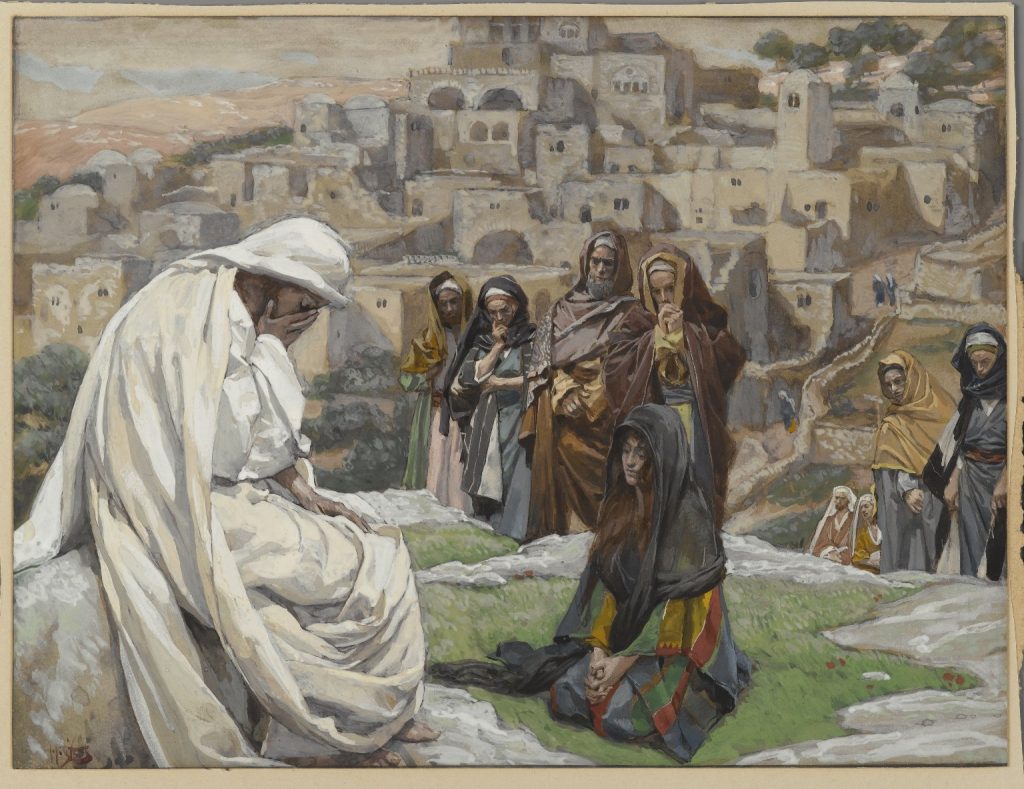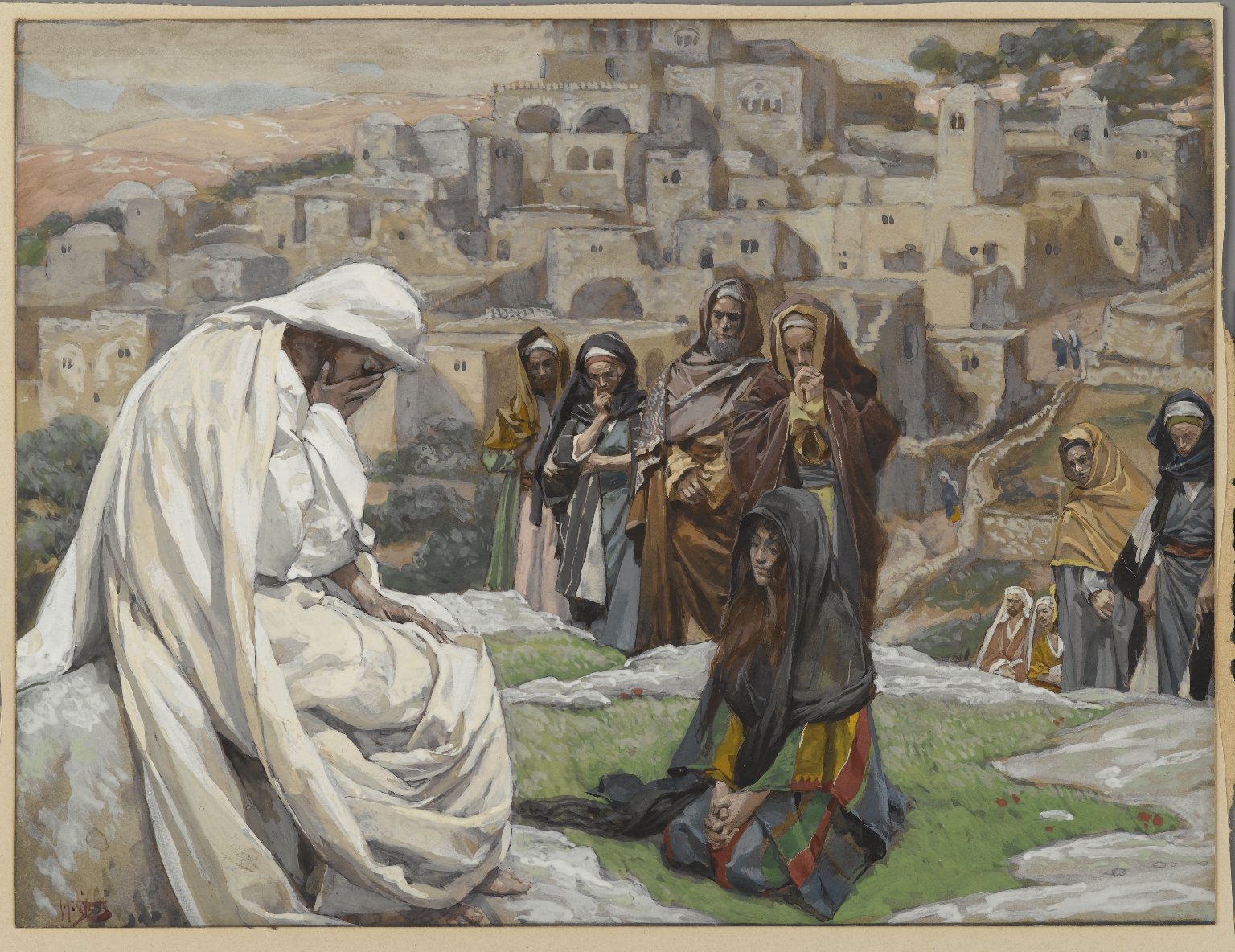
When Jesus therefore saw her weeping, and the Jews who came with her also weeping, He was deeply moved in spirit and was troubled, and said, “Where have you laid him?” They said to Him, “Lord, come and see.” Jesus wept. So the Jews were saying, “See how He loved him!” (John 11:33–36)
The scene was understandably one of intense sorrow and pain. Not only was Mary weeping (a form of the verb klaio; “to wail,” or “to lament loudly”), but the Jews who came with her were also weeping and wailing loudly. According to Jewish custom, even the poorest family was expected to hire at least two flute players and a professional wailing woman. Since Mary, Martha, and Lazarus were a prominent family, they would likely have had even more professional mourners, in addition to the others who came to pay their respects (v. 19).
Observing the chaotic scene, Jesus was deeply moved in spirit and was troubled. Deeply moved is a misleading translation of the verb embrimaomai, which literally means to snort like a horse. Apart from its use in v. 38, it appears only three other times in the New Testament (Matt. 9:30; Mark 1:43, 14:5), where it is translated “sternly warned” or “scolding.” It thus includes the connotation of anger, outrage, or indignation. Jesus appears to have been angry not only over the painful reality of sin and death, of which Lazarus was a beloved example, but perhaps also with the mourners, who were acting like the pagans who have no hope (cf. 1 Thess. 4:13). Tarasso (troubled) further emphasizes the intensity of the Lord’s reaction. The term is similarly used elsewhere to describe strong emotions, such as Herod’s reaction to the magi’s arrival (Matt. 2:3), the disciples’ terror when they saw Jesus walking on the water (John 14:26); Zacharias’s fear when he saw the angel in the temple (Luke 1:12); the disciples’ amazement at seeing Jesus after His resurrection (John 24:38); Jesus’ reaction to His impending death (John 12:27); and His response to Judas’s imminent betrayal (John 13:21).
Jesus then asked, “Where have you laid him?” They said to Him, “Lord, come and see.” Whom the term they refers to is not defined, but it evidently refers to some in the crowd who were favorably disposed to Jesus, since they addressed Him respectfully as Lord.
Like the others, Jesus wept. But the Greek verb is not klaio as in verse 33, but dakruo, a rare word used only here in the New Testament. In contrast to the loud wailing implied by klaio, dakruo has the connotation of silently bursting into tears, unlike the typical funeral mourners. Jesus’ tears were generated both by His love for Lazarus, and by His grief over the deadly and incessant effects of sin in a fallen world. Verse 35, though it is the shortest verse in the Bible, is rich with meaning. It emphasizes Jesus’ humanity; He was truly “a man of sorrows and acquainted with grief” (Isa. 53:3). But while the Jews were correct in seeing Jesus’ sorrow as evidence that He loved Lazarus, they were wrong to think that His tears reflected the same hopeless despair that they felt.
The stage was now set for the compassionate Savior to visibly substantiate His claim to be the resurrection and the life. In the next section He would convincingly demonstrate His power over death by restoring Lazarus to life.
This Grace to You article originally appeared here.
Copyright 2022, Grace to You. All rights reserved. Used by permission.
Learn more from Verse by Verse Bible Commentaries
